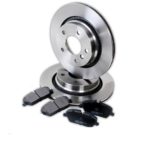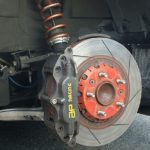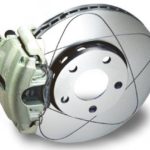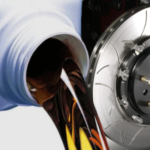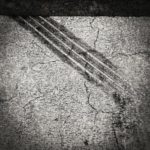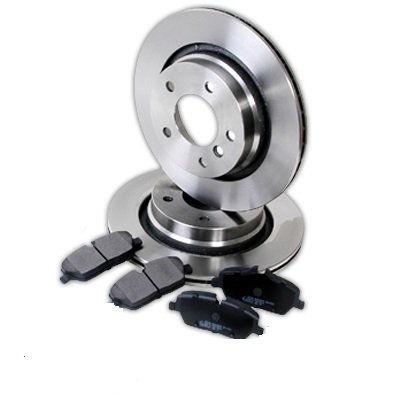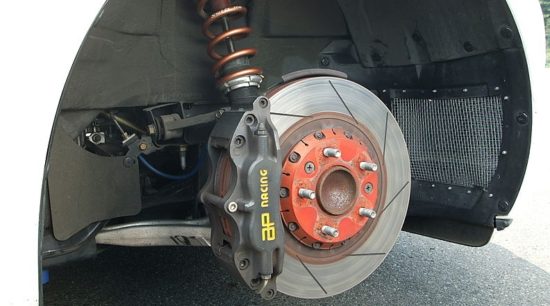Braking systems - Presentation of key components of braking systems
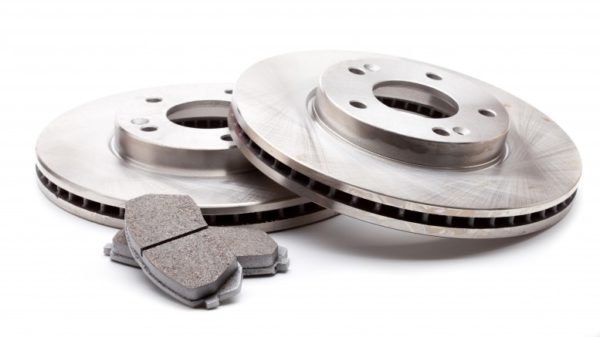
Braking systems
Braking systems are systems that serve to slow down or stop a vehicle completely and are one of the most important factors in traffic safety.

Often, the length of braking is the only thing that separates us from a traffic accident. As more and more cars are on our roads, braking systems must work like a well-oiled machine to prevent accidents. As their name suggests, it is a system, ie a system that consists of several parts, and we will introduce you to the most important ones.
The brakes actually work by creating a friction force that stops the vehicle. They convert the kinetic force of motion into thermal energy. In addition to friction brakes, there are also electromagnetic brakes, but they are more common in heavy vehicles and in trams. Friction brakes, which are the ones used in most vehicles, consist of a moving smooth surface, which is a drum or disc, depending on the vehicle to the vehicle and whether it is rear or front brakes, and a brake lining or pad that is attached to the moving part.
Due to the transmission of force from the brake pedal to the moving part of the brake, three ways can be used. The first is a solid connection, but today it is mostly not used in cars but on bicycles and motorcycles. The second is the hydraulic transmission, and it is mostly used in today's cars and lighter trucks. The pedal pushes the oil that comes to the cylinders through the brake hoses, and they push the brake pads or pads. And the third is the air transmission, which requires the installation of a very simple servo device that, when the brake pedal is pressed, opens the way to compressed air that pushes the brake pads or pads. This leads to the fact that a very small force is needed to stop.
Brake hoses are a very important part of the braking system. They are made of metal or rubber, provided that, if they are made of rubber, they are lined on the inside with canvas or wire, in order to withstand the high pressure that is created inside. Let's clarify, with hydraulic brakes, which are installed in most cars today, the oil that passes through the brake hoses is one of the main braking factors, ie it creates the pressure that causes braking at all. The brake hoses connect the oil tank to the brake system and create pressure in them, which is the main brake code. Namely, when we press the brake pedal, a force is created which acts on the liquid, ie on the oil which further transmits the force which then acts on the piston which is located in the master brake cylinder. In fact, the task of the piston is to press the fluid, and that is the oil, and it transmits that pressure through the pipe to a single cylinder at each point, and this creates a braking effect.
And brake discs are a very important part of the braking system. Most cars are made of cast iron, while in extra fast cars, such as in Formula 1 made of ceramic. However, this technology has been adopted by some car manufacturers and incorporated into ordinary sports cars that can be driven on ordinary roads. Today's brake discs can be globally divided into full and ventilated. Full brake discs are thinner and today are mostly installed in the rear of the car, where there is less consumption and wear. Ventilation discs are thicker and are produced in several variants and can often be seen through alloy wheels, so they become an aesthetic addition. Ventilation discs can be cut, drilled, combined, and so on. Very popular with German vehicles is the new so-called 'power disc' which has a multifunctional groove. It is interesting that such a disc was first tested on racing cars, and then it was transferred to serial production for all types of cars produced in Germany. Power disks, in fact, offer more security because they brake better and are longer lasting. It should be noted that there is a braking system using a disc and a drum, and a combination of these two systems, but the disc is much more suitable in shape because it cools much faster, which is very important in a braking system. On the other hand, the drum braking system needs significantly less pressure than the discs, and for that reason a brake booster or servo device is installed in the disc braking system.
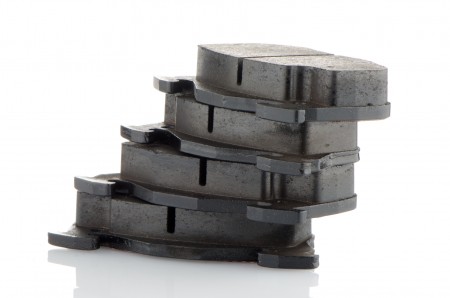
Finally, we must not forget the brake pads or brake pads. They rest on the brake calipers and are used with brake drums. It is important that these tiles lie exactly in the drum and withstand large differences in temperature. They must not scrape on the drums, but must fit exactly into them, otherwise they may scratch and reduce their braking ability. The brake pads are glued or latched onto the brake calipers until they reach the desired position and shape with respect to the drum. When worn, all tiles on one axle must be replaced.
So, the whole braking system is actually a mechanism that, just like a real watch, must work in a uniform and accurate way, because this is the only way we can have a safe vehicle and a short brake trace. And this can only be achieved by regular vehicle service and care.
Recommendation of similar texts:

Hi there, I am Mladen and I am an auto enthusiast. I started this blog years ago to help like minded people share information about latest cars, car servicing ideas, used car info, exotic cars, and auto technology. You will find helpful articles and videos on a wide variety of cars - Audi, Mercedes, Toyota, Porsche, Volvo, BMW and much more. Ping us if you have anything cool to share on latest cars or on how to make older cars more efficient, or just want to say hi!

